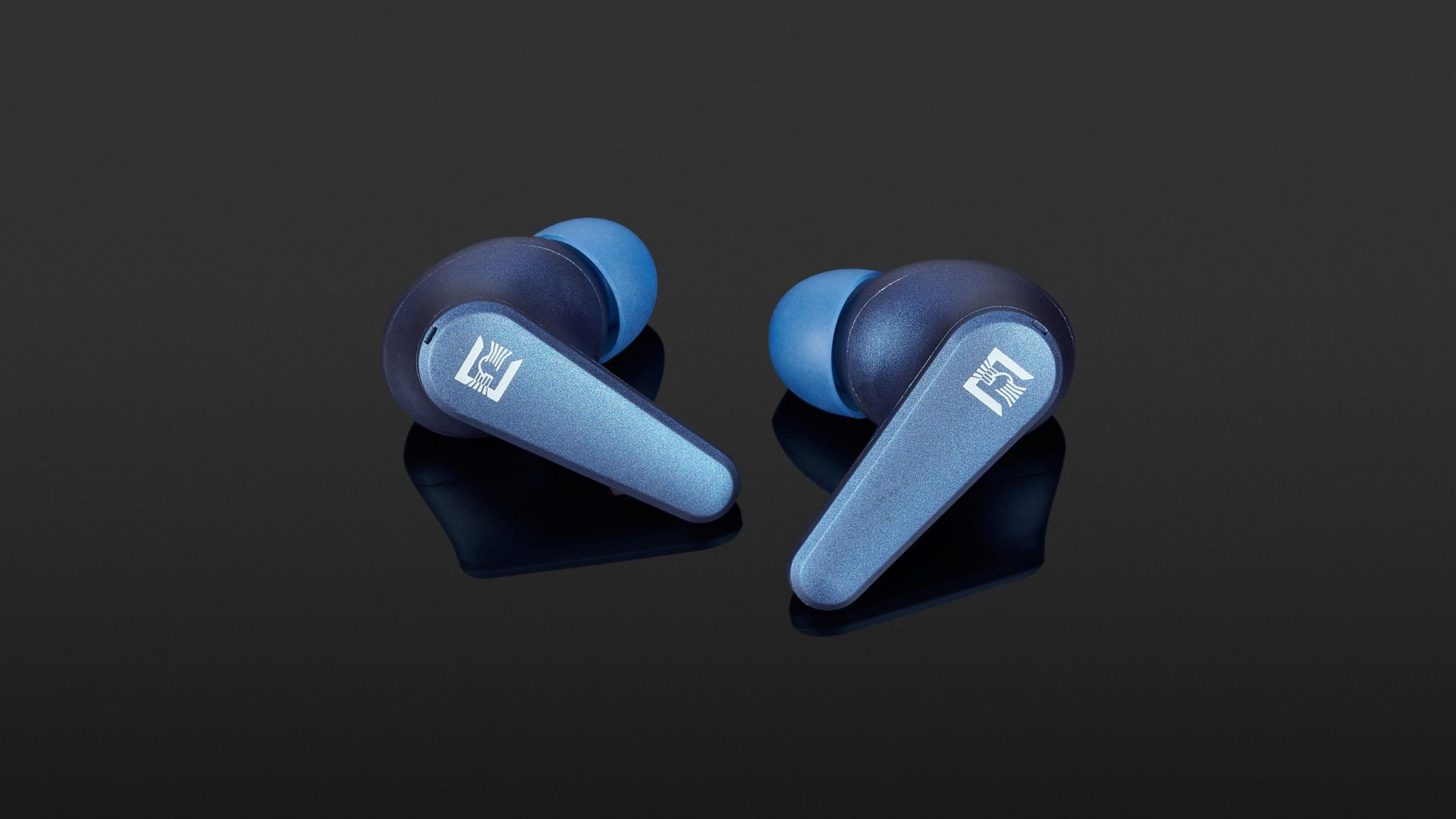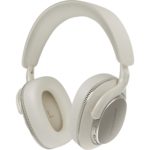The lightweight Ultrasone Lapis are notable for excellent battery life and good speech intelligibility during phone calls, except for in loud background noise. The noise-cancelling mainly reduces low-frequency sources of interference. What these weatherproof True Wireless in-ears don’t have are settings for individual earpieces and sound, as there is no app connection. In this respect, a full-bodied, assertive sound is all set for mobile use, but this does not always seem sufficiently controlled in the bass range.
With the Ultrasone Lapis, the Bavarian headphone specialist introduces the first wireless in-ear model to its range. It is characterised by first-class battery life and supports Bluetooth standard 5.2. A total of six microphones are used to attenuate and amplify external noise and are intended to ensure a high level of speech intelligibility during phone calls.
With a weight of five grams per side, the Ultrasone Lapis are pleasantly light, fit comfortably in the ears and do not cause any pressure discomfort even when worn for several hours. The housings protrude only slightly from the ears, so the earphones can be worn under a cap or hat if it is not too tight. Their flat design favours a stable fit that allows for sporting activities, as long as the in-ears are not exposed to strong vibrations. The system is also protected against weather-related moisture and sweat in accordance with IP54.
Battery life
A special feature of these wireless in-ears is the excellent endurance of their rechargeable batteries, meaning that the Ultrasone Lapis offers a runtime of more than twelve hours in basic mode at a higher volume. If noise cancellation is active, nine hours and 40 minutes are still possible on one battery charge. In the handy case, which weighs only 40 grams, the earphones can also be fully charged twice, while the third charging process provides a residual capacity for about two hours. This results in a total runtime of over 38 hours in standard mode and 31 hours in ANC mode. One charging cycle of these in-ears takes two hours, but this is not visible from the outside as there is no charge level indicator. There is no quick-charge function. There is a choice between a wireless power supply to the case via Qi or wired charging via the USB-C port, which takes two hours and 45 minutes. A USB-C to USB-A charging cable is included.
Operation
Pairing the Ultrasone Lapis, which support single-sided use, can be done by opening the case, which turns the in-ears on and puts them into pairing mode. Placing them back in the charging case switches the system off, although the earpieces can also be switched off and on again manually by holding down the touch-sensitive surfaces. We noticed that the range of the Bluetooth connection in urban environments was not particularly high, at seven to eight metres; the first dropouts occurred after only five metres when there was a wall between two rooms.
One shortcoming of the touch control is that no volume control is provided. Otherwise, playback can be controlled by tapping, which is used to answer and end phone calls and is possible on both sides. The left earpiece can be used to select a track by tapping twice to skip forward and three times to skip back. Voice assistants can be called up by double-tapping the right side, while a short hold switches between basic, ANC and ambient mode on both sides. An app connection with earpiece and sound customisation options is not available.
Speech quality during phone calls
In a quieter environment, the Ultrasone Lapis offer pristine voice quality during video conferencing and phone calls, and this was the case for both sides of the conversation. By suppressing background noise while speaking, one’s voice is easily understood even in a busy setting. However, the person on the other end of the call perceives the microphone filtering technology as a whispering noise, which can be disruptive of conversation when there is louder ambient noise.
Sound
The Ultrasone Lapis provide powerful reproduction with a rich bass range that also has substance in the lower registers. In this respect, the aim is to achieve a high fun factor, but in my view, this was not completely successful. For bass-oriented music, the low-frequency reproduction develops a rather low pressure; although full-bodied, it seems somewhat spongy and sometimes diffuse. However, rock and pop productions sound much more controlled and enhance listening pleasure. The midrange was also reproduced with full body and energy so that solo instruments and voices were assertive, even during outdoor activities. At the same time, the midrange reproduction did not seem intrusive or demanding when listening in a relaxed atmosphere on the sofa. The upper registers might be perceived as somewhat demanding, especially at higher volume levels. The high-frequency range seemed lively in a positive sense but fell off a little and tended to be slightly overemphasised in sibilant sounds.
In addition to the Bluetooth standard SBC, the AAC format is used as an audio codec, but high-resolution variants of the aptX family or LDAC are not available.
Noise cancellation (ANC) and ambient mode
In ANC mode, slight background noise could be perceived, but this did not affect the playback. There was also a noticeable increase in the lower frequency range, which resulted in a considerable expansion of the low bass. This made the sound seem darker and fuller, especially as the volume increased. Otherwise, the noise-cancelling feature of the Ultrasone Lapis reduced monotonous, low-frequency external noise in particular, which was noticeable when using public transport or commuting by train. Street noise, voices or keyboard noises were reduced less effectively and remained slightly perceptible.
In ambient mode, amplification of external noises could have been more intensive, as it had slightly stronger background noise. When playback was paused, voices in the immediate vicinity were easily intelligible so that communication could take place via the earpieces; however, speech passed through quite quietly. Responsiveness during playback was limited to rather moderate volume levels.
Technical specifications
- Ear couplingIn-ear
- Typeclosed
- Transducer principledynamic
- Frequency response (headphones)20 - 20.000 Hz
- Impedance32 ohms
- Sound pressure level (SPL)110 dB
- Weight without cable5 g each, case 40 g
What's in the box
- Eartips in 3 sizes (S/M/L)
- USB-C to USB-A charging cable
- Charging case
Special features
- BT codecs: SBC, AAC
- BT version: 5.2
- BT profiles: A2DP, AVRCP, HFP



















































